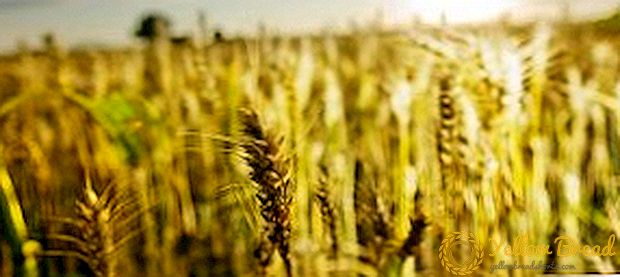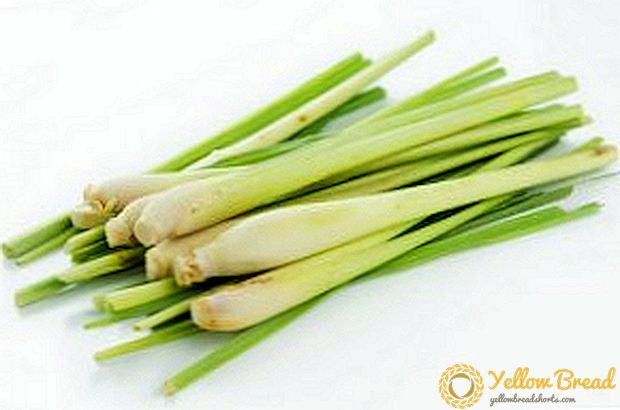 Winter barley among farmers is becoming very popular, and every year it is gaining momentum and more appears on the fields, thereby displacing the spring barley that is more familiar to us.
Winter barley among farmers is becoming very popular, and every year it is gaining momentum and more appears on the fields, thereby displacing the spring barley that is more familiar to us.
The main advantage of this crop is its early harvest and the possibility of planting after harvesting another crop, and it also makes it possible to better and thoroughly prepare the field for planting any other crop. Let's look at the question of planting winter barley, planting methods and other important information.
- Consider the question of how to plant winter barley
- How deep should winter barley be sown?
- Seeding norms of winter barley
- What is the time for sowing winter barley?
Consider the question of how to plant winter barley
There are three methods for planting winter barley:
- The first method is a solid private with a distance between rows of 15 centimeters.
- The second method is a cross with 15 centimeters between the rows.
- The third method is narrow-ranged with a distance between rows of 7-8 centimeters.
This method of planting barley is called narrow ranks. When using this method, the seeds are placed more rationally when planted, the rows become larger, and the seeds are smaller in them, compared to the continuous row method. This is its advantage over other methods. Against this background, weed infestation is reduced, light is uniformly falling on all plants, and a uniform distribution of water resources and nutrients travels.
When planting in a narrow way, the yield is increased to 20%.
 The essence cross way sowing is based on the fact that the seed drill passes across the field twice, the first time along, and the second time across. The seeding rate is divided by half. But with all this, the seeds are laid out evenly throughout the field.
The essence cross way sowing is based on the fact that the seed drill passes across the field twice, the first time along, and the second time across. The seeding rate is divided by half. But with all this, the seeds are laid out evenly throughout the field.
The yield with this method of sowing is increased to 20%, as in the narrow-row method. But the cross method requires a lot of money, the time of sowing the crop is delayed, and in rainy weather there may even be a gap in time between the moves of the seeding unit, which will subsequently affect different shoots and ripening of the crop.
The following aggregates can be used for sowing winter barley: SZU-3,6; NWT-3,6; SZ-3.6 and others. The depth of planting seeds directly depends on the soil and climatic conditions, on average, it ranges from 3 to 6 centimeters. On all heavy soils, these data are reduced to 3-4 centimeters, since the culture can not ascend at all. And on light sandy or sandy soils, on the contrary, the depth increases to 7-8 centimeters.
How deep should winter barley be sown?
 The main reasons for the low germination of seeds of winter barley and the formation of inefficient crops are considered to be deep and uneven planting of seeds. In areas where humidity is in abundance, a normal sowing depth is 2-4 centimeters. For germination of seeds need a normal thermal regime, a sufficient amount of moisture and oxygen. Barley due to the filminess of the grain is demanding of a large amount of moisture for germination.
The main reasons for the low germination of seeds of winter barley and the formation of inefficient crops are considered to be deep and uneven planting of seeds. In areas where humidity is in abundance, a normal sowing depth is 2-4 centimeters. For germination of seeds need a normal thermal regime, a sufficient amount of moisture and oxygen. Barley due to the filminess of the grain is demanding of a large amount of moisture for germination.
With a deep landing, more water is required, but the access of oxygen becomes less.Winter barley is sown a little later, with a lower average temperature, because of the deep planting, the seedling period increases.
When using resource-saving technologies while observing all the norms of sowing, seed planting depth should not be more than 2-3 centimeters.
Seeding norms of winter barley
For several decades in a row, winter barley has been recommended to sow with a seeding rate of about 4.5 million / ha of viable seeds. But with the use of intensive technologies and the creation of new varieties, a decrease in the seeding rate is observed.
 If the seeding rate is high, then the culture thickens, and winter barley does not like it and the crops become harvested, various diseases develop, the number of grains and their fullness decrease in the ear. It is necessary to observe the normal ratio between the thickness of the productive stalk, which should not be more than 650 pcs / m2, and the weight of the seed kernel, about 0.8-1.0 grams.
If the seeding rate is high, then the culture thickens, and winter barley does not like it and the crops become harvested, various diseases develop, the number of grains and their fullness decrease in the ear. It is necessary to observe the normal ratio between the thickness of the productive stalk, which should not be more than 650 pcs / m2, and the weight of the seed kernel, about 0.8-1.0 grams.
To determine the optimal sowing rate of winter barley, first of all, it is necessary to pay attention to the properties of the soil on which you plan to sow the crop. If this land is moist, highly fertile, prepared for planting crops, then the seeding rate should be about 3.0 million / ha.
In order to create a high bushiness of the culture with such a small seeding rate, it is necessary to use the following agrotechnical measures:
You must use the appropriate varieties of culture.
- The soil should be fertilized with a sufficient amount of fertilizer.
- It is necessary to use growth regulators.
 The highest sowings are obtained at a seeding rate of 3.5 million / ha of viable seeds. The seeding rate should be increased only in two cases, either when you are late with the planting dates, or when the conditions for growing the crop are not very favorable.
The highest sowings are obtained at a seeding rate of 3.5 million / ha of viable seeds. The seeding rate should be increased only in two cases, either when you are late with the planting dates, or when the conditions for growing the crop are not very favorable.
On lands that are not characterized by high fertility, the seeding rate should be left high, that is, approximately 4.5-5 million / ha.
What is the time for sowing winter barley?
 If this culture is sown earlier than expected, it is likely that it will outgrow and will not survive the winter frosts. If the autumn is warm, then until the end of the autumn growing season, winter barley can reach the moment it goes into the tube, which, on the negative side, will affect its winter hardiness, as a result of which the crops may freeze. If, on the contrary, you are late with the sowing of culture, then this affects the poor development of crops that grow under poor hydrothermal conditions.
If this culture is sown earlier than expected, it is likely that it will outgrow and will not survive the winter frosts. If the autumn is warm, then until the end of the autumn growing season, winter barley can reach the moment it goes into the tube, which, on the negative side, will affect its winter hardiness, as a result of which the crops may freeze. If, on the contrary, you are late with the sowing of culture, then this affects the poor development of crops that grow under poor hydrothermal conditions.
The best time for sowing winter barley is the second half and the end of sowing winter wheat.
As a result of research of experimental institutions, winter barley in the Carpathian zone is necessary from September 5 to September 20, in the Polissya zone from September 15 to 25, in the forest-steppe zone in the third decade of September, and in the foothill zone from September 15 to 24.
Biennial varieties can be sown in autumn and spring. If you sow in the fall, the culture is very overgrown, they need to be sown a week later than the usual winter barley varieties. Biennial varieties have their own peculiarity; this is the fact that their autumn growing season ends later, and the spring growing season begins earlier. This has a good effect on the growth and development of the culture during late shoots. Biennial varieties that were sown late in the spring can climb and get a good raskolitsya.






